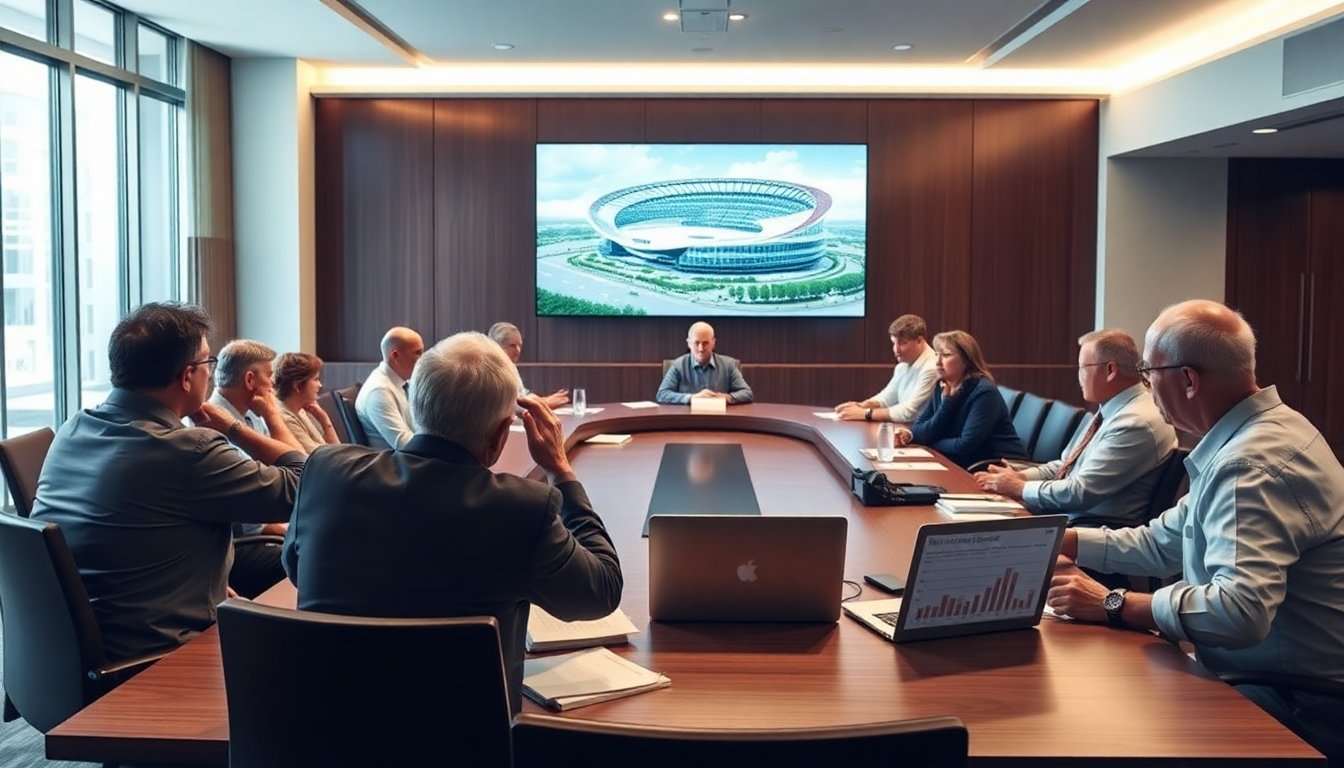Table of Contents
The City of Surrey is embarking on a significant development with the approval of a dedicated entertainment district in its city centre. This project includes a modern arena designed to host 10,000 attendees, a necessity according to Surrey Mayor Brenda Locke, given the city’s population of 723,000. However, some council members have expressed serious concerns about the financial burden this may place on taxpayers.
During a recent council meeting, Mayor Locke defended the initiative, asserting, “There isn’t a city in North America of this size that doesn’t have a large gathering space.” Her vision for the entertainment district encompasses a vibrant hub for community events, sports, and concerts, which could significantly influence the local cultural landscape. Nevertheless, the financial implications of constructing the arena have ignited a contentious debate.
Concerns over funding and priorities
Council member Linda Annis has emerged as a leading critic of the project. She estimates the cost of the new arena could approach $600 million, a figure she derived from comparisons with the budget for the Newton Recreation Centre. Annis questions whether such a substantial investment aligns with the community’s immediate needs, suggesting funds might be better allocated to recreation facilities that serve local neighborhoods.
As she prepares to run for mayor in the upcoming municipal election, Annis is advocating for a public referendum on the arena’s financing. She emphasizes that taxpayers should have a voice in significant expenditures, highlighting the absence of a detailed business plan or budget estimates for the project. “A dynamic entertainment district is a fantastic concept, but it should not come at the expense of our essential parks and community facilities,” she stated.
The city’s vision for the entertainment district
A detailed report from city officials outlines the plans for the arena and the surrounding entertainment district. This report emphasizes the potential for the arena to accommodate a primary sports tenant while also serving as a venue for concerts and community events. The proposed site is strategically located near the Chuck Bailey Recreation Centre and Tom Binnie Park, enhancing accessibility for residents.
Integration with local development
According to the city staff report, the entertainment district aims to integrate diverse commercial and recreational spaces. The vision includes not only the arena but also retail and dining options that would foster a lively atmosphere. The report suggests that co-locating the arena with hotels and conference facilities could broaden its functionality, enabling it to host trade shows and various events beyond sports.
Furthermore, the city plans for new developments within the district to prioritize commercial spaces on the ground levels, ensuring the area remains vibrant and engaging for visitors. This strategy is intended to create a dynamic urban environment that encourages foot traffic and supports local businesses.
Future steps and community engagement
As discussions progress, Mayor Locke reassures residents that the project’s financing will not be solely reliant on taxpayers. The city is actively exploring potential private partnerships to help mitigate the costs associated with constructing the arena. “We have a plan to ensure that this will not be on the backs of taxpayers,” she stated, pledging to provide detailed cost assessments before the next municipal election in.
Locke’s commitment to transparency is crucial as the city advances its plans. Engaging the community throughout this process will be essential to address concerns and garner support. The mayor emphasized that the public will be kept informed about the financial details of the arena project, aiming for a collaborative approach as the entertainment district develops.
The evolving story of Surrey’s entertainment district serves as a compelling case study in urban development. With its potential to transform the local landscape, the project elicits both anticipation and skepticism, highlighting the significance of community dialogue in shaping the future.


